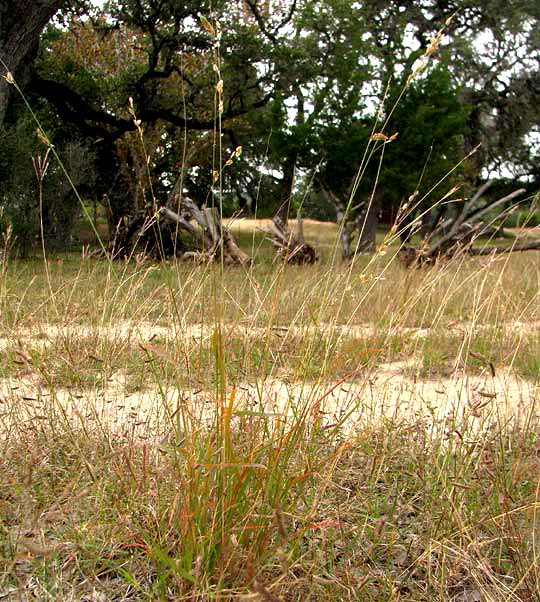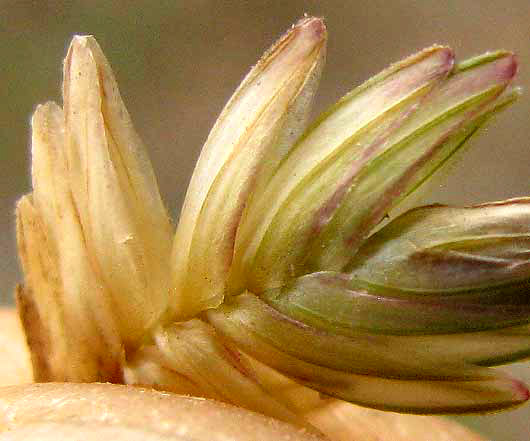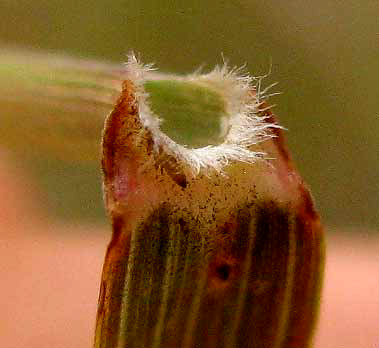Excerpts from Jim Conrad's
Naturalist Newsletter
from the November 17, 2013 Newsletter issued from the Frio Canyon Nature Education Center in the valley of the Dry Frio River in northern Uvalde County, southwestern Texas, on the southern border of the Edwards Plateau; elevation ~1750m (~5750 ft); N29.62°, W99.86°; USA
WILMAN LOVEGRASS
Here at the edge of the prairie grasses are abundant and diverse. It's easy to start overlooking them, hoping to see herbaceous wildflowers. Still, from time to time a unique grass catches the eye, and that's what happened this week with a grass along a seldom used road, shown below:

Admittedly, in the picture it's not so spectacular, but if you draw close and look at the spikelets you'll see unexpected elegance, shown below:

The spikelets are very flatly compressed, with the backs of the scales, or lemmas, of individual florets forming sharp ridges. Each lemma bears three well defined veins -- one vein on each side of the sharp-backed midrib -- and a hint of raspberry color. A close-up of individual florets -- the lemmas up to 5mm long -- can be admired below:

I'd never seen this grass, so to identify it its ligule -- the flange-like affair at the blade's bottom where it meets the stem -- had to be photographed, and it turned out to be an interesting one, shown below:

The ligule is a very hairy, collar-like membrane. That's unusual, because many grasses have no ligule at all, and those that do usually produce ligules that either are membranous or consist of a wall of hairs, but this one is both membranous and hairy. Also, a good field mark for this species is the narrowness of the blade -- only about 2mm wide (1/16th inch) -- and how the blade tends to curl in on itself, forming a cylinder, as it dries. Also, notice that, except for the ligule hairs, other parts of the blade and sheath below the blade are hairless.
Originally I keyed out this grass to Buckley's Tridens, Tridens buckleyanus, endemic just to Texas's southern Edwards Plateau area. However, Bill Carr, who knows the Texas flora much better than I, wrote saying that to him it looked like Wilman Lovegrass, ERAGROSTIS SUPERBA. Bill writes: